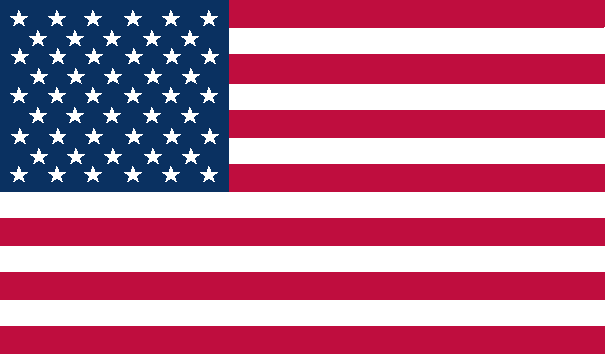Joe Asked,
How do veteran preference points work when it comes to federal employment? Does it apply to state jobs as well? Where can I get the proof? God bless all military and veterans!
Hey Joe,
There are a lot of resources online that describe the basics of the veteran preference point system. Let’s go beyond that today and not only show what preference points are but also where they come from. Also, we’ll answer your question on whether they apply to state jobs and where to get proof of qualification for any potential employer.
Veteran Preference Points: The Basics
So first here’s the copy/paste job that describes who qualifies for the 3 different levels of veteran preference points. This list is from the government ran website “Feds Hire Vets”:
0 Point Preference
You are a 0-point preference eligible if you were released or discharged from a period of active duty from the armed forces, after August 29, 2008, by reason of being the only surviving child in a family in which the father or mother or one or more siblings:
- Served in the armed forces, and
- Was killed, died as a result of wounds, accident, or disease, is in a captured or missing in action status, or is permanently 100 percent disabled or hospitalized on a continuing basis (and is not employed gainfully because of the disability or hospitalization), where
- The death, status, or disability did not result from the intentional misconduct or willful neglect of the parent or sibling and was not incurred during a period of unauthorized absence.
Note: No points are added to the passing score or rating of 0 point preference eligible, but you are entitled to be listed ahead of non-preference eligibles with the same score on an examination, or in the same quality category.
5 Point Preference
You are a 5 point preference eligible if your active duty service meets any of the following:
- For more than 180 consecutive days, other than for training, any part of which occurred during the period beginning September 11, 2001, and ending on August 31, 2010, the last day of Operation Iraqi Freedom, OR
- During the Gulf War, between August 2, 1990 and January 2, 1992, OR
- For more than 180 consecutive days, other than for training, any part of which occurred after January 31, 1955 and before October 15, 1976, OR
- Between April 28, 1952 and July 1, 1955 OR
- In a war, campaign or expedition for which a campaign medal or badge has been authorized.
10 Point Preference
You are a 10 point preference eligible if you served at any time, and you:
- have a service connected disability, OR
- received a Purple Heart.
Preference Categories
Now that we have discussed your preference eligibility and the associated points, let’s discuss preference groups. Preference eligibles are divided into five basic groups as follows:
- CPS – Disability rating of 30% or more (10 points)
- CP – Disability rating of at least 10% but less than 30% (10 points)
- XP – Disability rating less than 10% (10 points)
- TP – Preference eligibles with no disability rating (5 points)
- SSP – Sole Survivorship Preference (0 points)
Note: The letters preceding each category, e.g., “TP,” are a shorthand reference used by OPM in competitive examinations. Disabled veterans receive 10 points regardless of their disability rating.
Documentation
You must provide acceptable documentation of your preference or appointment eligibility. Acceptable documentation may be:
- A copy of your DD-214, “Certificate of Release or Discharge from Active Duty,” which shows dates of service and discharge under honorable conditions;
- A “certification” that is a written document from the armed forces that certifies the service member is expected to be discharged or released from active duty service in the armed forces under honorable conditions not later than 120 days after the date the certification is signed; OR
- A Standard Form (SF-15 (PDF file)), Application for 10-point Veterans’ Preference. If you are claiming 10 point preference, you will need to submit an (SF-15 (PDF file)).
You may obtain a letter from the Department of Veterans Affairs reflecting your level of disability for preference eligibility by visiting a VA Regional Office, contacting a VA call center or online.
Note: Prior to appointment, an agency will require the service member to provide a copy of the DD-214.
Beyond the Basics
The scope of veteran preference points so far doesn’t deal with any of the particularities that might come up regarding jobs at the state level, how they apply to retired veterans, and why veterans have preference points.
Jobs at the State Level
I did not find any documentation on whether or not states are required to utilize the veteran preference point system but according to an article in Military.com all 50 states do use them depending on which job is being offered with 4 states offering what is called an “Absolute” preference.
Currently, Massachusetts, New Jersey, Pennsylvania and South Dakota provide “absolute” preference, which means they hire veterans with a passing civil service test score ahead of all non-veterans. The other 46 states use a point system similar to the one used by the federal government.
Military.com | By Sean Mclain Brown
Retirees
The only caveat to the veteran point preference system for retirees that I found is that the points are only available to veterans who are ranked lower than O-4. If you are O-4 or above you can still use veteran points if you have a disability rating. So that means the Command Sergeant Major of the Army is good to go, but non-disabled Major Spiffy is not. This might seem a little odd at first but that Major is making more in 4 years then our CSM is making in 10. Although, they do equalize after the Major hits his cap and once the CSM has hit about 30 years of active service.
A quick word on The VOW to Hire Heroes Act of 2011. This Act provides soon to be veterans who are still in active service the ability to utilize veteran preference points in their transition from the military. Check the VA Fact Sheet for more details.
A BrieF hISTORY OF vETERAN pREFERENCE POINTS
Veteran’s preference extends back officially to the Civil War era in the United States. Although, according to Wikipedia contributors, other types of veteran benefits existed in ways that were comparable to and adopted from European models as early as the Revolutionary War, although they were not codified into law.
The first Act for veteran preference established in 1865, would provide preferment to Union veterans who were disabled in the line of duty for appointment to civil offices as long as they were shown to still be capable of performing the tasks in the job.
Since that initial legislation there have been 17 major updates or revisions to continue modernizing, expanding, and specifying how and to whom veterans preferences will be administered.
Timeline of veterans’ preference in the Federal Civil Service
- 1865: First veterans’ preference (VP) in appointment law; for Union veterans separated for wounds or illnesses. Vets must have been honorably discharged and qualified for job.
- 1876: First VP in reduction in force (RIF) law
- 1919: After World War I, law grants VP to all honorably discharged veterans, their widows, and the spouses of veterans too disabled to work
- 1923: To distinguish between the preference and granted by the 1865 and 1919 laws, an Executive Order grants disabled vets 10 points and other vets 5 points, to be added to their individual numerical ratings in examinations (pt system first introduced)
- 1929: Executive Order places disabled vets at the top of examination lists of eligibles and continues 10 extra points
- 1944: Veterans’ Preference Act incorporates 1865, 1876, and 1919 laws, plus Executive Orders for extra points, passover protection, and rule of three. Continues to be cornerstone of veterans’ civil service legislation today (applied preference to active duty service during war, expedition, or campaign for which badge was authorized, must be separated under hon cond, rule of three)
- 1952: Amendment extended 1944 law to include active duty service from 4/28/52 – 7/1/55 Korean War
- 1966: Peacetime preference for Vietnam-era vets added active duty for >180 consecutive days between January 31, 1955 and October 10, 1976; guard and reserve service not included
- 1967: Expanded 1967 act to all vets who served on active duty for >180 days (no req to serve during war, campaign, or conflict) between January 31, 1955 and October 10, 1976 (guard and reserve service not included)
- 1968: Executive Order creates Veterans’ Transitional Appointment, a new way for Vietnam-era veterans to enter Federal service without public examination. Forerunner of Veterans Readjustment Appointment (VRA)
- 1974: VRA enacted into law
- 1976: By law, veterans whose service begins after October 14, 1976 are granted preference only if they become disabled, or serve in a declared war, a campaign, or expedition. (This resulted from the end of the Vietnam War and draft and Department of Defenses desire to build a career military service.
- 1978: Civil Service reform act creates new benefits for 30 percent or more disabled veterans; special appointing authority, and extra protection in hiring and retention. Preference ends for nondisabled retired majors and above. Efforts to broaden rule of three and make exceptions to numerical ratings in examinations defeated by veterans’ groups
- 1988: Law requires Dept. of Labor to report agencies’ violations of veterans’ preference and failure to list vacancies with State employment services to OPM for enforcement
- 1990: VRA law amended to include post-Vietnam-era veterans, but end coverage of most Vietnam-era veterans
- 1992: VRA law revised to restore eligibility to Vietnam-era veterans
- 1997: Defense Appropriations Act grants preference to gulf war veterans and certain campaign medal holders in Bosnia (included guard or reserve service if for other than training)
That’s about all for this response but if you want to know, literally, every possible detail about Veteran Preference Points then visit the United States Office of Personnel Management (OPM) website at: https://www.opm.gov/policy-data-oversight/veterans-services/vet-guide-for-hr-professionals/
Also, check out title 5, United States Code, Section 2108 (5 USC 2108)
Hope that helps,
-Specialist Carroll-











